What happens when the Olympus Stylus 1 meets the TCON-17X? We review the 510mm f/2.8 transformation
posted Saturday, May 10, 2014 at 8:15 AM EDT
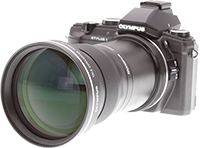
The TCON-17X 1.7x teleconverter is designed to extend the 35mm equivalent focal length range of the Olympus Stylus 1 from 300mm to 510mm, quite a sizeable jump indeed, all while still maintaining the bright f/2.8 constant aperture. This is currently unrivaled by any camera in the price range of this combination, other than the Panasonic FZ200, which extends to 600mm eq. f/2.8 but has a smaller 1/2.3" sensor, which is somewhat limited in comparison for both low light performance and image quality.
To attach the TCON-17X to the Stylus 1 you first unscrew the lens cap, then screw on the conversion lens adapter [CLA-13 - available for around US $40] and then screw the TCON-17X onto the adapter. The result is quite an impressive looking rig indeed.
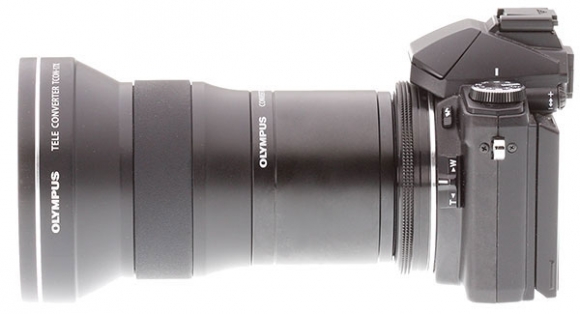
Olympus Stylus 1 ($649) + CLA-13 ($40) + TCON-17 ($199) = 510mm f/2.8 for ~ $888
My first impression of the TCON-17X was how solid it felt when I first pulled it out of the box, and that huge piece of glass sitting out front is very impressive, too. The unit screws on with a reassuring metal-on-metal precision, and the look of the whole rig is quite unique. The best part is the way it rests in your left hand, with a wide rubber grip that's just right for your thumb and forefinger. I've read that some shooters felt the teleconverter was too large for the smaller bodies of the Olympus XZ-1 and XZ-2, but I felt that it balanced rather nicely on the Stylus 1, both in terms of the weight, and also for the visual appearance. (Perhaps as a qualification, though, it feels just fine to me on my little XZ-1 as well, because in both cases I'm primarily holding the lens.)
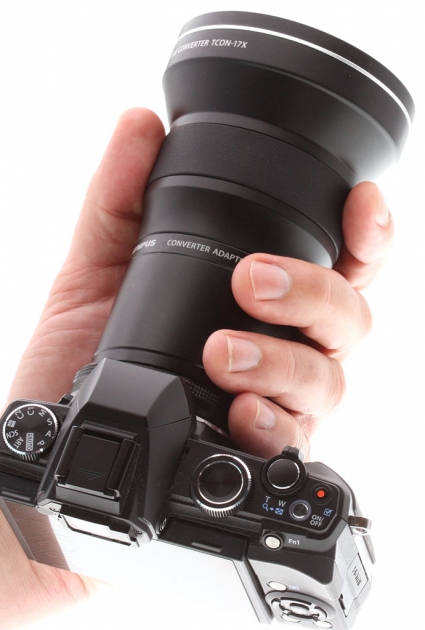
Switching the camera on for the first time with the conversion lens, you'll see an odd vignetted image with dark corners on the LCD or EVF before the lens has been zoomed out, but once you zoom far enough (past about 5.9x), this goes away. [*note added 7-4-14: Thanks to our reader AI S for asking what the true effective range of the teleconverter is, as I'd initially made the conservative estimate of 7.1x based on visual appearance on the LCD. You can actually zoom out to about 5.9x (281mm eq.) without any apparent vignetting, and will likely experience only minor vignetting down to 4.9x (231mm eq.). But by 4.4x (211mm eq.) the corner shadows become obvious and you'll want to remove the converter for wider shots at that point. Still, it's nice to know that there is a bit of overlap, so you can be assured that you won't miss any of the available range from 28mm-510mm eq.]
It's important to note here that the camera menu (under menu #2) contains an icon of this unit with a setting for TCON-17X. By switching this on, the lens will automatically extend to the full telephoto position when the camera powers on, saving you the trouble of having to zoom out. We'll discuss that setting more in just a bit.
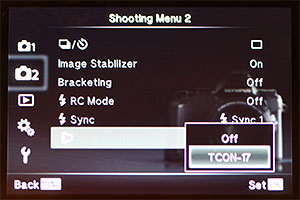
Performance. Conventional rear-element conversion lenses have traditionally suffered from typical drawbacks inherent in their design, such as being less sharp, deceasing the effective aperture and thus affecting exposure values, as well as introducing other issues such as chromatic aberration and distortion. We'll take a look now at how the TCON-17X grapples with these common setbacks, and then move onto real world images.
The first thing to mention is that there is no noticeable decline in autofocus speed or performance when the TCON-17X is attached. AF operates smoothly and efficiently, similarly to the Stylus 1 with only its built-in lens, the only minor difference being that it takes a few milliseconds longer on average to go from close focus to infinity. The difference is almost imperceptible, though, and is a natural by-product of the longer effective focal range. And while we're discussing focus, it bears noting that you aren't able to achieve good macro performance with the teleconverter attached. As seen from the examples below, the effective close range is less than that of the fixed lens at 300mm, and far less than the lens at wide angle with "super macro" enabled.
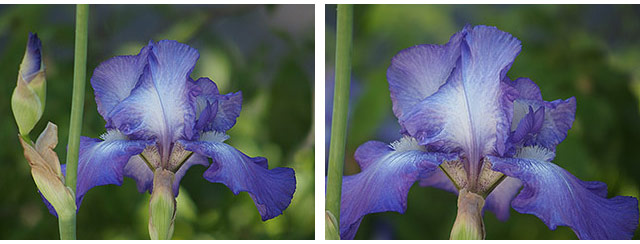
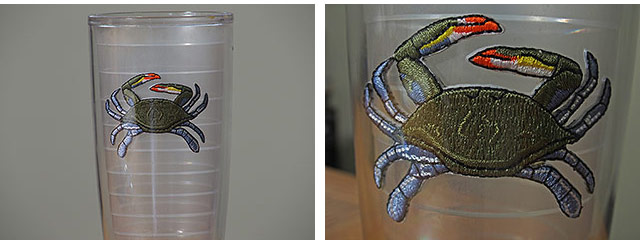
[note: super macro mode can't be enabled with the teleconverter attached]
This isn't a complaint, because as mentioned in our Stylus 1 review, the super macro mode allows the camera to get incredibly close on its own - just a mention for anyone expecting to be able to use the longer zoom range to macro advantage. The TCON-17X's power is in bringing distant objects a whole lot closer, and indeed it does.
Sharpness. I enlisted our senior lab technician Luke Smith to shoot our VFA test target in order to compare sharpness from the TCON-17X against that of the Stylus 1's fixed lens on its own, and the results are shown below. The first is a crop at full resolution from the center of the target, and the second a crop from the top left corner of the target to demonstrate any potential issues with corner sharpness or aberration.
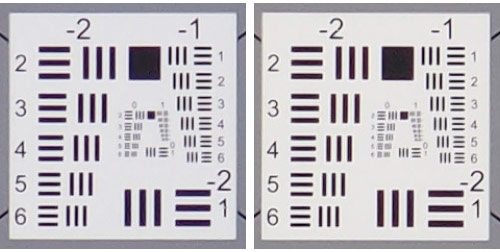
[testing center sharpness]
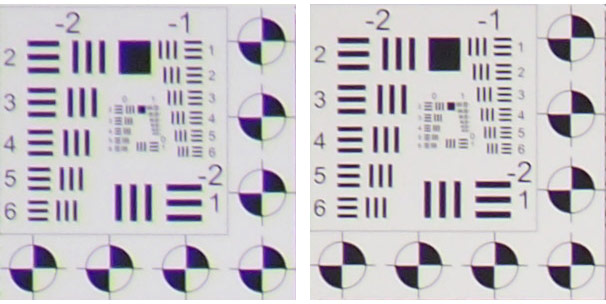
[testing corner sharpness]
The center is not quite as sharp as we see with the Stylus 1's fixed lens by itself. The decline is not severe though, and this is seen at 1:1 resolution, so is a pretty magnified view. The results in the corners are a bit worse though, as there is certainly less sharpness and also some obvious chromatic aberration occurring. This is not unusual for a teleconverter, and we've seen much worse examples than this. Still, anyone needing critical sharpness in the corners should take note here, as well as anyone concerned with the slight chromatic aberration as you get further from center.
Exposure. One other common complaint often heard regarding typical teleconverters is the loss of light caused by the spreading of the light coming from the attached lens, forcing longer shutter speeds to effect the same exposure. I checked for this with the TCON-17X in a variety of shooting conditions, and saw virtually no difference in exposure values when switching back and forth. You won't need to worry about exposure performance when attaching the teleconverter to the Stylus 1.
As mentioned earlier, there is a menu setting called TCON-17 (in camera menu #2 with a teleconverter icon) that zooms the camera to the full tele end during power-up. This is helpful for two reasons. First, if this isn't enabled, the camera powers up to wide angle, which results in darkened corners of the image when the teleconverter is attached. It's nice to start working from the tele end, when that's what you're after in the first place. The second benefit is that the camera will properly record the EXIF data and give accurate focal length settings. These two differences were the only effects that our lab technician or I were able to find. We didn't notice any difference in sharpness, any corrections for CA, etc, so if you forget to turn the setting on, your resulting images will still be the same (assuming you zoom out to at least a 300mm eq. range) and only your EXIF data will be off, which most people won't care about anyway. [correction: Thanks to a helpful comment below from our reader DavidG we were able to determine that enabling the TCON-17 setting also causes the image stablizer (when engaged) to behave more aggressively in order to compensate for the longer effective zoom range, so an even more compelling reason to make sure it's enabled.]
The Real World. That seems like enough testing... let's take the TCON-17X out for some real world fun.
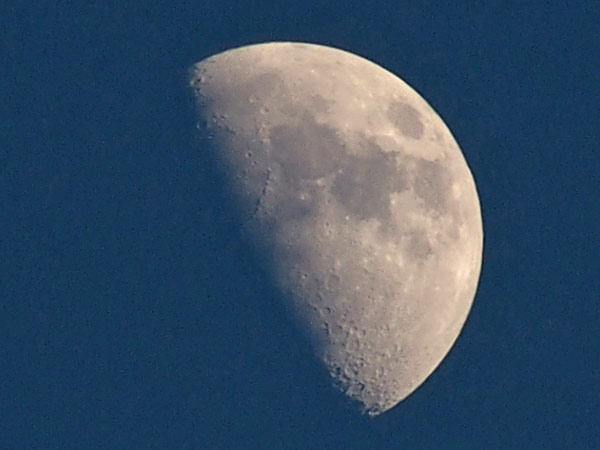
[image has been cropped and slightly enhanced in post]
The moon's a fun place to shoot. This image won't win any awards,
but it's nice to be able to get one this good to talk about with the kids.
I really need to congratulate the Olympus marketing team on something before we go any further with real world images, because I always like to see what manufacturers claim their products can do. I can't tell you how many times I've seen an image for a product that looks like it was actually taken by some much more expensive product instead. In the case of the TCON-17X, Olympus shows the image of an airplane passing overhead and the sharpness level they achieved in that image is the same as I was able to achieve with a shot of the moon and a (very lucky) shot of a blue heron that passed above me. [take a quick look at their airplane photo for comparison before we begin, I'll wait]
My favorite shot I was able to get with the Stylus 1 paired with the TCON-17X was of this great blue heron below. I was walking my dog and just trying to get a few (relatively easy) shots of ducks and geese around our local lake, and out of the corner of my eye came this majestic heron overhead. This shot was the only chance I had, and fortunately for me I had the camera on, in-hand and the settings correct for just such a shot.
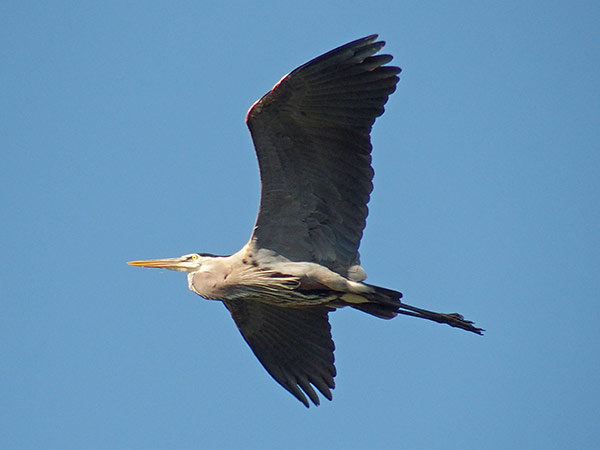
1/1600 / f/2.8 / ISO 200 / 510mm eq.
[image has been cropped and slightly enhanced in post with shadow/highlight]
People, pets, flowers and more birds. I was sad to say goodbye to the Stylus 1 when that review was done, so this was like dessert for me, to be able to enjoy using it again with the TCON-17X. Below are some of the other shots I was able to get with the combination, and there are quite a few more in our Olympus Stylus 1 Gallery, the ones with "TCON" in the title. In the gallery you can also access the original images as delivered straight from the camera with no post processing. [note that some TCON gallery images report incorrect EXIF data regarding the focal length, as I didn't know at that point to turn on the TCON setting - but all the TCON-prefaced files were shot with the TCON-17X attached]

1/250 / f/2.8 / ISO 320 / 510mm eq.
[image has been cropped and slightly enhanced in post with shadow/highlight]
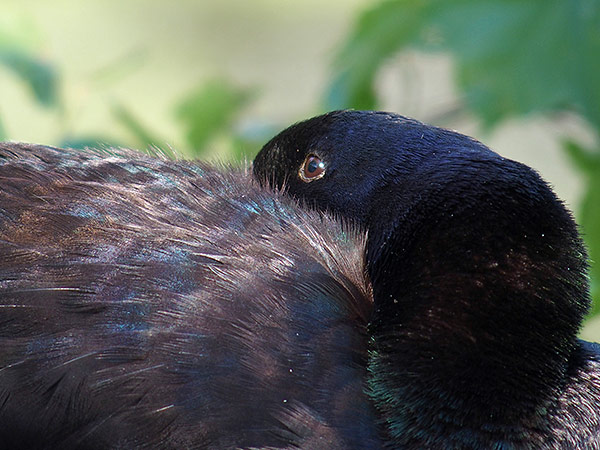
1/160 / f/2.8 / ISO 100 / 510mm eq.
[image has been cropped and slightly enhanced in post]

1/250 / f/2.8 / ISO 400 / 510mm eq.
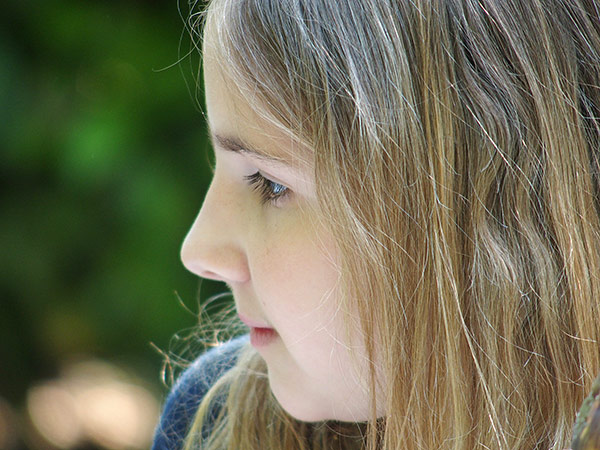
1/200 / f/2.8 / ISO 400 / 510mm eq.

1/500 / f/2.8 / ISO 200 / 410mm eq.
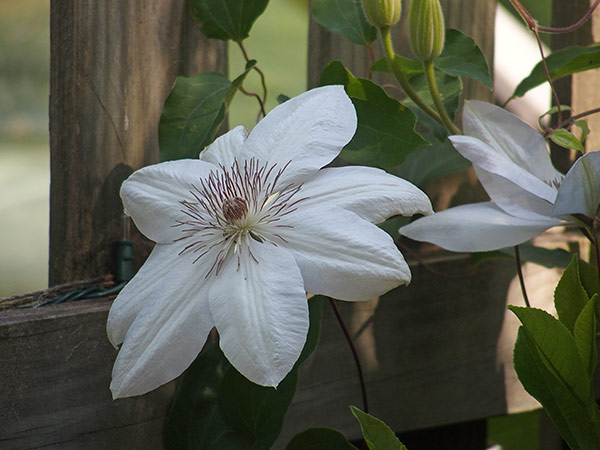
1/500 / f/2.8 / ISO 200 / 510mm eq.
[image has been cropped and slightly enhanced in post with shadow/highlight]
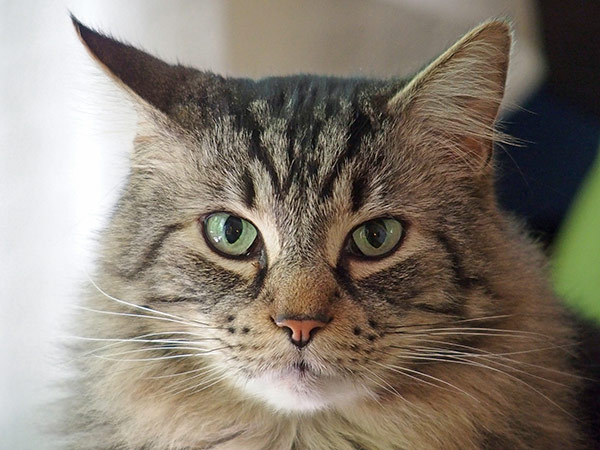
1/60 / f/2.8 / ISO 1000 / 510mm eq.
[image has been slightly enhanced in post with shadow/highlight]

1/1000 / f/2.8 / ISO 100 / 510mm eq.
Thanks to our reader Craig for reminding me to shoot a few stopped down (OK, yes, I am a bit addicted to shooting wide open. Zig, he saved you the trouble). Below are shots at f/4, f/5.6 and f8. The first two examples below contain additional versions in our gallery shot at each full stop (2.8, 4, 5.6, 8) so that you can make comparisons across the available aperture spectrum. [note: all other gallery images were shot handheld, with IS enabled, but these test series shots were shot on a tripod with a self-timer and IS turned off -- focus point in the center]

1/250 / f/4 / ISO 100 / 510mm eq.
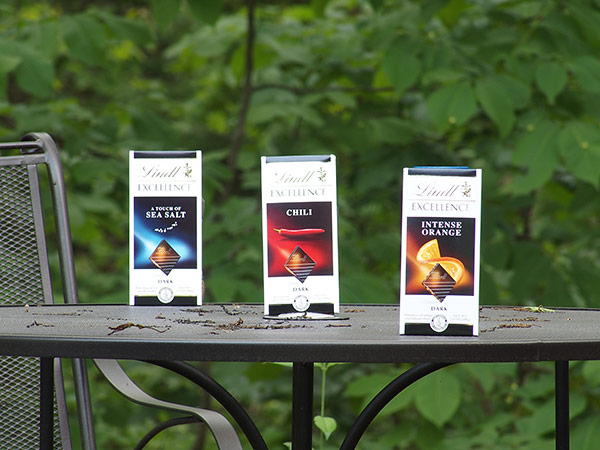
1/20 / f/5.6 / ISO 100 / 510mm eq.
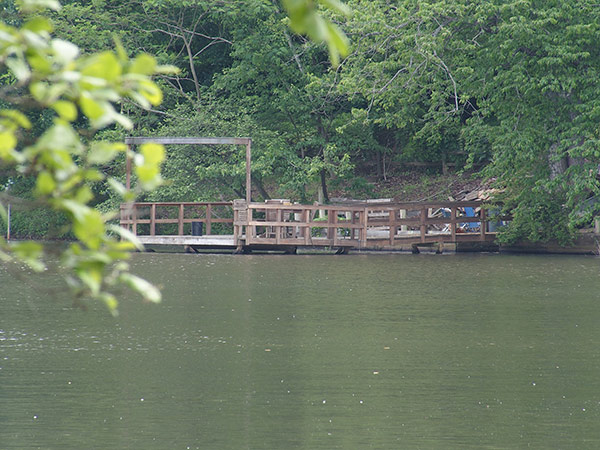
1/25 / f/8 / ISO 100 / 510mm eq.
Conclusion. The Olympus TCON-17X is a really nice, complimentary accessory for the Olympus Stylus 1. At a street price of $199 (plus an additional $40 for the CLA-13 adapter) you've got a whopping 510mm focal length range while remaining at a constant f/2.8 aperture. This is an amazing amount of power, housed in a relatively small and lightweight package. On a long hike, the additional weight likely wouldn't be noticed in a backpack, particularly when compared to larger DSLR rigs with huge telephoto lenses.
Of course, this combination doesn't take the place of those larger rigs for truly professional applications. Depending on the shot you're trying to get, this setup falls somewhere between the big enthusiast or pro rigs and smaller-sensored super-zooms like the Panasonic FZ200 in terms of image quality. But the price and weight are a lot closer to the super-zooms, and this entire setup (camera, adapter, and teleconverter) at present sells for only about US$888.
I can heartily recommend this accessory to anyone wanting to step up from traditional point and shoots with smaller (1/2.3") sensors, as well as to enthusiasts looking for a lighter weight option than their big rigs to have on hand when those are either not needed or not desired for the weight and space. And because the Stylus 1 can operate so incredibly quietly (turn off all sounds and you won't believe how quiet the shutter is) you can attach the TCON-17X and get really close to wildlife without disturbing them with the shutter (and/or mirror) clacks and flaps that you'd find with the bigger equipment.
For the price, when paired with the competent Stylus 1, the TCON-17X is yet another really solid offering from Olympus.
[quick links: Olympus Stylus 1 • Image Gallery]

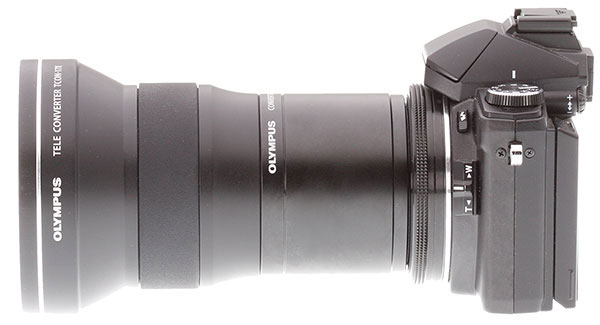
Olympus Stylus 1 ($649) + CLA-13 ($40) + TCON-17 ($199) = 510mm f/2.8 for $888





1/400 / f/4.5 / ISO 200 / 510mm eq.